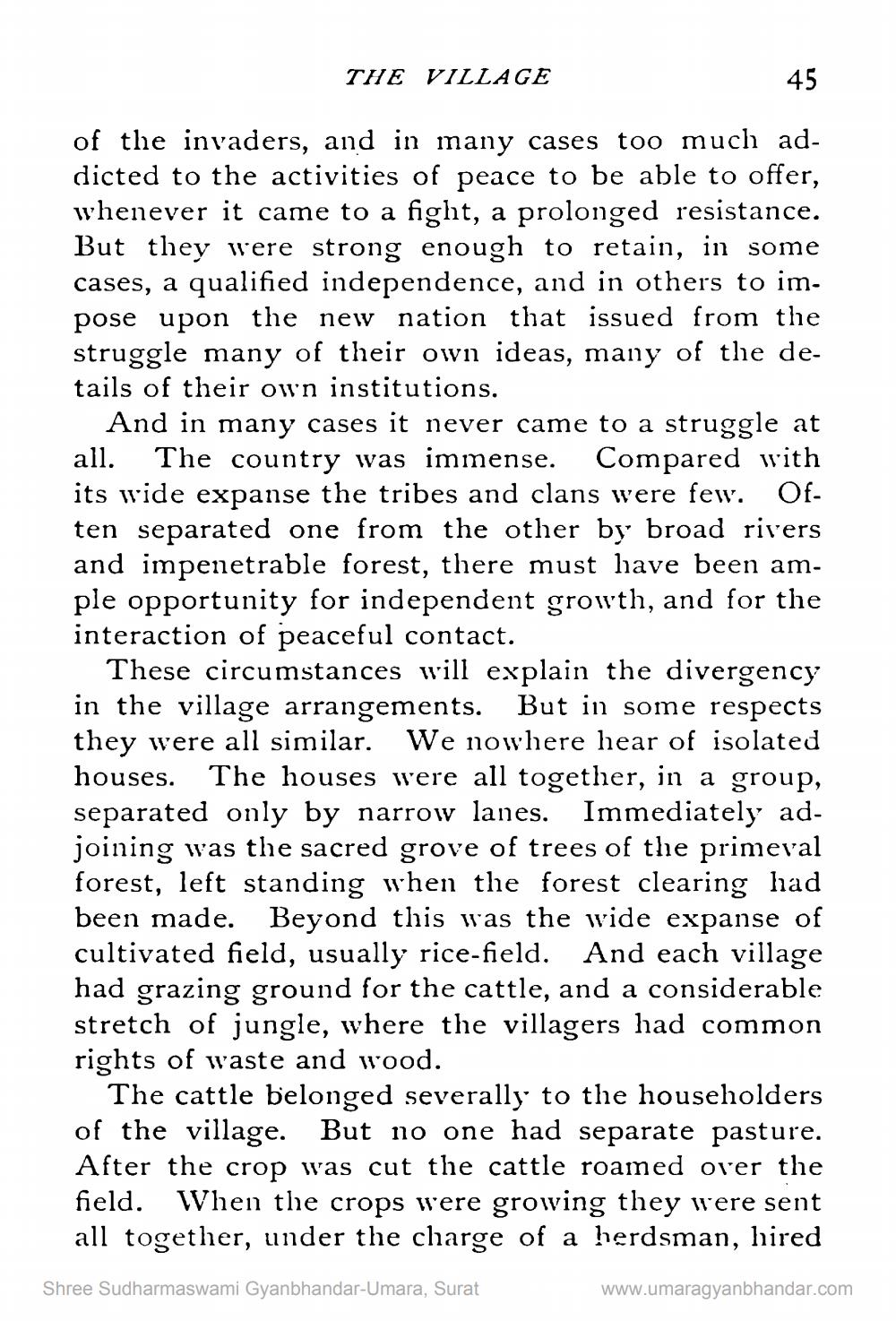________________
THE VILLAGE
45
of the invaders, and in many cases too much addicted to the activities of peace to be able to offer, whenever it came to a fight, a prolonged resistance. But they were strong enough to retain, in some cases, a qualified independence, and in others to impose upon the new nation that issued from the struggle many of their own ideas, many of the details of their own institutions.
And in many cases it never came to a struggle at all. The country was immense. Compared with its wide expanse the tribes and clans were few. Often separated one from the other by broad rivers and impenetrable forest, there must have been ample opportunity for independent growth, and for the interaction of peaceful contact.
These circumstances will explain the divergency in the village arrangements. But in some respects they were all similar. We nowhere hear of isolated houses. The houses were all together, in a group, separated only by narrow lanes. Immediately adjoining was the sacred grove of trees of the primeval forest, left standing when the forest clearing had been made. Beyond this was the wide expanse of cultivated field, usually rice-field. And each village had grazing ground for the cattle, and a considerable stretch of jungle, where the villagers had common rights of waste and wood.
The cattle belonged severally to the householders of the village. But no one had separate pasture. After the crop was cut the cattle roamed over the field. When the crops were growing they were sent all together, under the charge of a herdsman, hired
Shree Sudharmaswami Gyanbhandar-Umara, Surat
www.umaragyanbhandar.com




